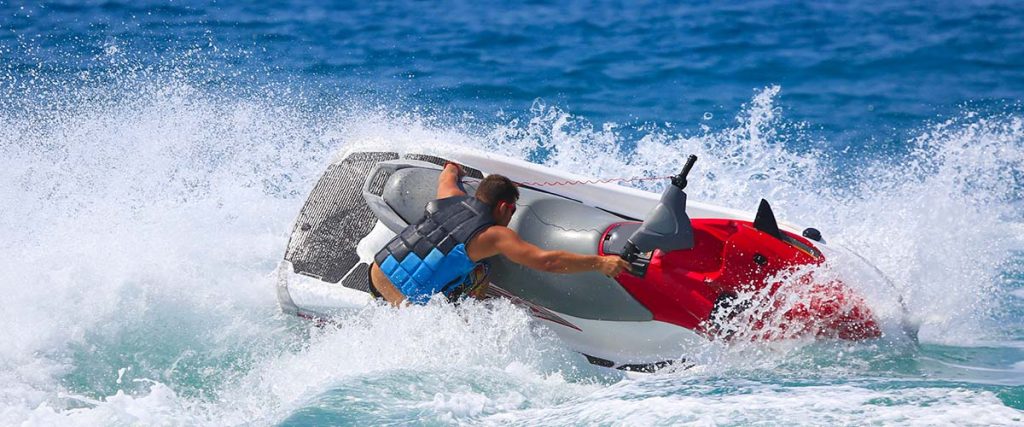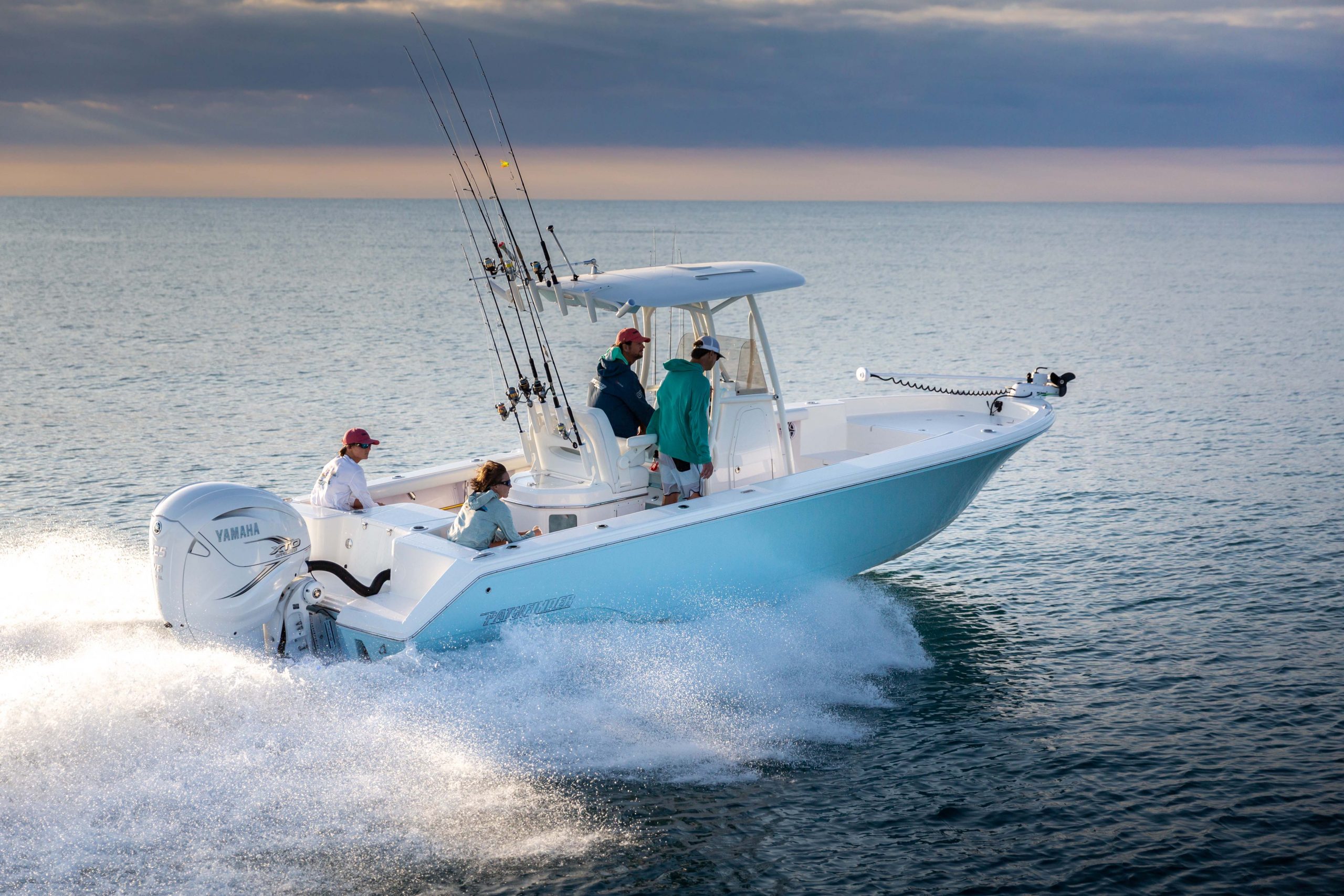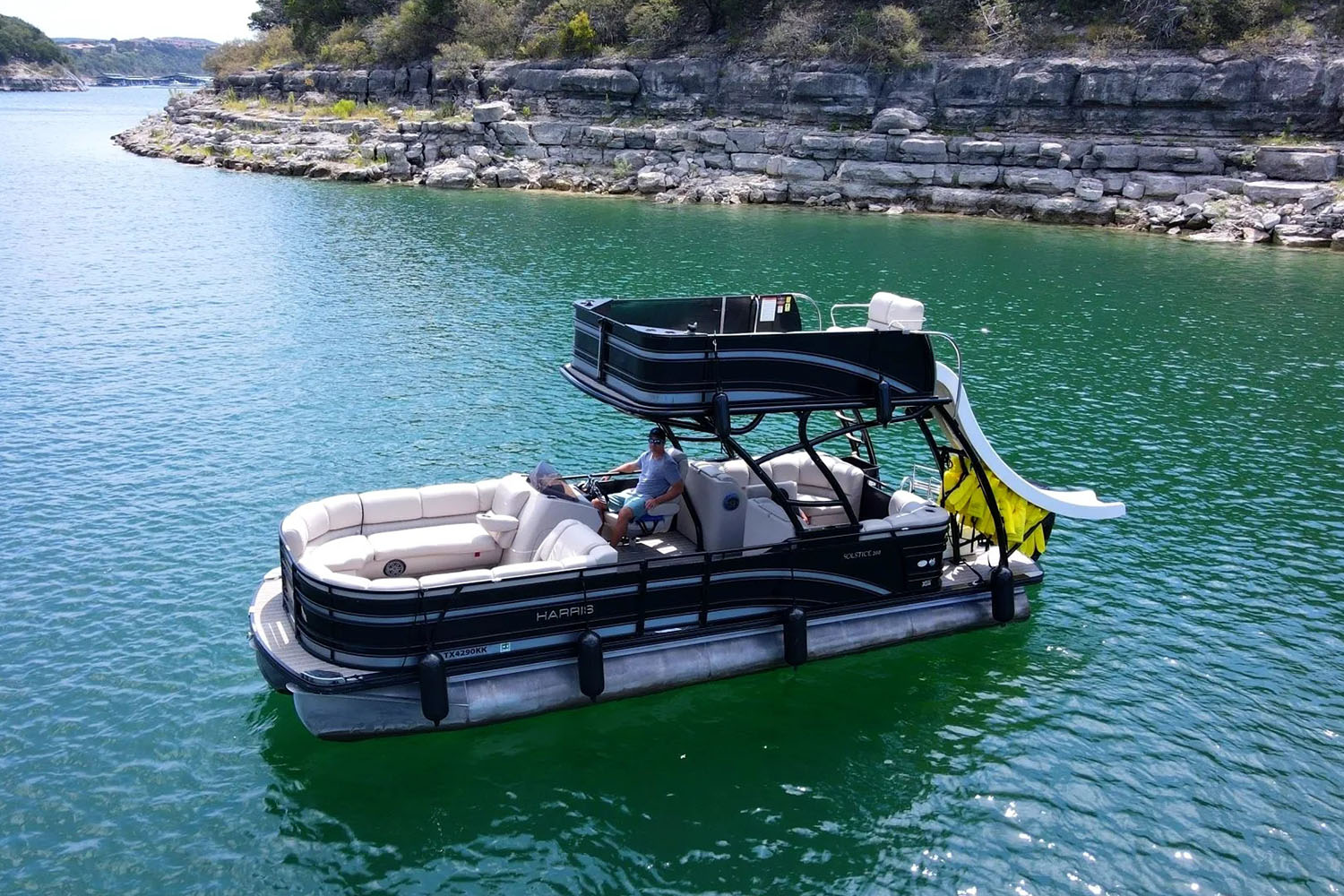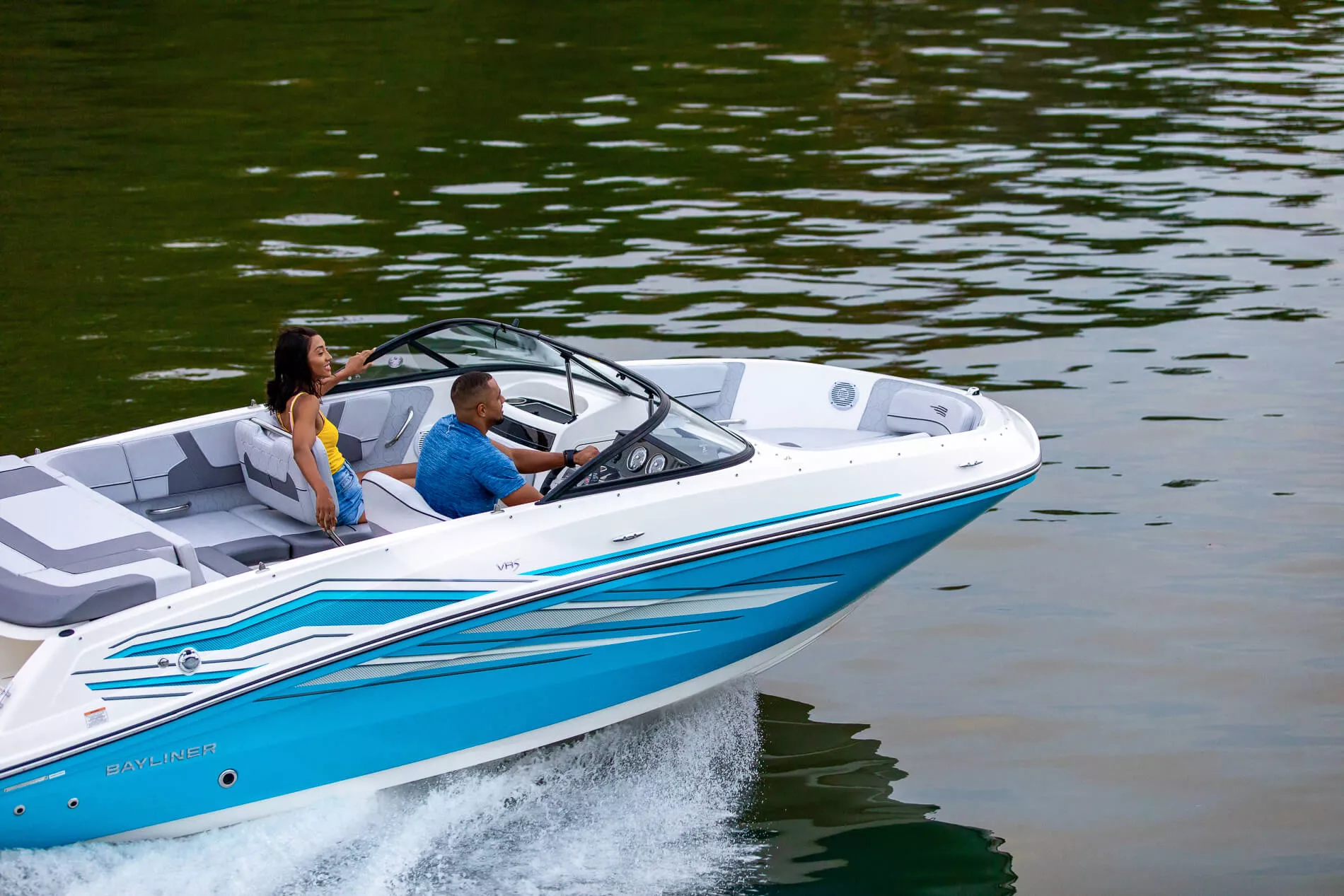Which Action May Cause the Loss of Steering Ability in a Personal Watercraft (PWC)? Key Safety Risks Explained
Personal watercraft (PWC) are fun and exciting to ride, but they require skill and knowledge to operate safely. Many people don't know that letting go of the throttle can cause a PWC to lose steering ability. This happens because PWCs use jet propulsion for both power and steering.

Releasing the throttle control on a PWC may cause a loss of steering ability. When you let off the throttle, the water jet that steers the craft loses power. Without this force, you can't turn the PWC even if you turn the handlebars. This can be very dangerous, especially when you're trying to avoid an obstacle or another boat.
It's key to keep some throttle on when turning a PWC. This keeps water flowing through the jet nozzle, allowing you to steer.
Riders need to practice this skill in open water before heading into busy areas. Knowing how to control your PWC properly can help prevent accidents and make your time on the water more fun.

Key Takeaways
- Letting go of the throttle can make a PWC lose steering ability
- PWCs need throttle power to steer effectively
- Proper throttle control is crucial for safe PWC operation
Understanding PWC Dynamics
Personal watercraft (PWC) use a jet drive system for propulsion. This system pulls water in through an intake and pushes it out a nozzle at the back.
The jet of water provides both thrust and steering. When the rider turns the handlebars, it changes the direction of the jet.
A key part is the impeller. It spins fast to create water flow through the system. The impeller sits inside the jet pump housing.
PWCs need throttle to steer. Without power to the jet, there's no water flow to turn the craft. This is different from boats with rudders.

The steering nozzle at the back of the PWC directs the water jet. It moves left and right as the rider turns the handlebars.
Losing throttle means losing steering. If the engine stops or slows too much, the PWC can't turn. This can happen if the rider lets go of the throttle or the engine cuts out.
PWCs are very responsive. Small handlebar movements can cause big direction changes. Riders need to be aware of this to control the craft safely.
Factors Affecting Steering Ability
A PWC's steering ability can be affected by several key factors. These include issues with the craft itself, outside forces, and how the rider operates the vehicle.
Mechanical Issues
The steering mechanism is crucial for controlling a PWC. A broken or damaged steering cable can make it hard or impossible to steer. Regular checks and upkeep of the steering system are vital.
Wear and tear on moving parts can also cause problems. Loose connections or worn-out components may lead to steering failure.
Improper maintenance can result in steering issues. Neglecting to service the PWC regularly might allow small problems to become big ones.

Environmental Conditions
Wind can push a PWC off course, making it harder to steer. Strong gusts may require more effort to keep the craft on track.
Currents in the water can affect steering too. They may pull the PWC in unwanted directions, especially at low speeds.
Waves can make steering more difficult. They can lift the front of the PWC, reducing contact with the water and steering control.
Water depth changes can also impact steering. Shallow areas may limit the water flow to the jet drive, affecting steering response.
Operator Handling
The rider's position and balance are key for good steering. Leaning too far to one side can make the PWC harder to control.
Letting go of the throttle can cause a loss of steering. PWCs need water flow from the jet drive to steer effectively.
Speed also affects handling characteristics. Going too fast or too slow for conditions can make steering more challenging.
Sudden turns or changes in direction can upset the PWC's balance. This may lead to a temporary loss of steering control.
Importance of Power in Steering
Power plays a crucial role in steering a personal watercraft (PWC). Unlike traditional boats, PWCs rely on water jet propulsion for both movement and steering.
The throttle controls the water flow through the jet pump. This water flow is key to maintaining steering control. When a rider applies throttle, it creates a strong jet of water that allows for precise steering.
Letting off the throttle can cause a loss of steering ability. Without power, there's not enough water force to turn the PWC effectively. This is known as off-throttle steering.

Maintaining power is essential for maneuverability. It allows riders to make quick turns and avoid obstacles. PWCs are designed to be responsive, but this responsiveness depends on consistent power input.
Riders should practice using the throttle and steering together. This helps develop the skills needed for safe operation. It's important to keep power on when turning to maintain control of the PWC.
Safety Measures and Preventions
Proper safety practices are key to preventing loss of steering on a PWC. Riders must focus on equipment checks, safe operation, and emergency readiness.
Pre-Operation Checks
Before riding, inspect the PWC thoroughly. Check the steering system for loose parts or damage. Test the throttle control to ensure smooth operation. Make sure the lanyard is in good condition and securely attached to both the PWC and the rider.
Verify that all safety equipment is on board, including U.S. Coast Guard-approved lifejackets for each rider. Test the engine cut-off switch by pulling the lanyard while the engine is running.

Safe Operation Practices
Maintain throttle control while steering. Letting off the throttle can reduce steering ability. Keep a firm grip on handlebars and maintain awareness of surroundings at all times.
Avoid sharp turns at high speeds. Slow down in congested areas or near other watercraft. Always wear a properly fitted lifejacket while operating the PWC.
Follow local boating laws and speed limits. Stay alert for swimmers, boats, and obstacles in the water.
Emergency Preparedness
Learn how to regain control if steering is lost. Practice quick stops and turns in a safe area. Know how to reboard the PWC from the water.
Carry a waterproof phone or radio for emergencies. Learn basic hand signals to communicate with other boaters. Keep a first aid kit and basic tools on board.
Practice falling off and reboarding the PWC in a controlled setting. This builds confidence and improves reaction time in real emergencies.
Navigating Different Scenarios
Safe PWC operation requires skill in various situations. Riders must know how to avoid collisions, handle obstacles, and use reverse correctly. These skills help prevent accidents and keep everyone safe on the water.
Avoiding Collisions
PWCs need space to stop and turn. Riders should scan the water for other boats, swimmers, and objects. Keeping a safe distance is key. At least 100 feet from other vessels is a good rule.
PWCs can't stop quickly. Riders must start slowing down well before their destination. Letting off the throttle reduces steering control. To stop, riders should cut the engine and turn to avoid what's ahead.
Hand signals help communicate with other boaters. A raised hand means "stop" or "slow down." Pointing shows intended direction.

Handling Obstacles
Obstacles in the water pose risks for PWC riders. Common hazards include logs, rocks, and shallow areas. Riders need to stay alert and look far ahead.
Knowing the local waterways helps avoid surprises. Maps and depth charts are useful tools. Riders should follow marked channels when possible.
If an obstacle appears suddenly, quick action is needed. Turning sharply while keeping power on is often the best move. Cutting power can lead to loss of steering.
In very shallow water, riders may need to stop and walk the PWC to deeper areas. This prevents damage to the jet intake.
Reverse Operation
Using reverse on a PWC requires care. Most models have limited steering in reverse. Riders should practice in open water before trying it in tight spaces.
To use reverse, come to a full stop first. Look behind to ensure it's clear. Engage reverse slowly and be ready to cut power if needed.
Reverse is useful for docking and launching. It helps with precise movements in close quarters. But it's not meant for extended travel.
In emergencies, reverse can help avoid collisions. If forward momentum is too great, quick use of reverse might prevent impact.
Legal Considerations and Compliance
PWC riders must follow specific laws to stay safe on the water. The U.S. Coast Guard sets rules for all boats, including PWCs. These rules cover safety gear, speed limits, and proper operation.
Most states require PWC operators to be at least 16 years old. Some areas have specific speed limits for PWCs. Riders must obey these limits to avoid fines and accidents.
PWC users need to carry safety equipment like:
- Life jackets for all riders
- Fire extinguisher
- Sound-producing device (whistle or horn)
- Visual distress signals

It's illegal to operate a PWC at night in most places. Riders must also stay a safe distance from other boats, swimmers, and shore areas.
Many states require PWC operators to take a boating safety course. These courses teach important skills and laws. Completing a course can sometimes lower insurance costs.
Reckless operation of a PWC is against the law. This includes unsafe speeds, jumping wakes too close to other boats, and spraying other people with water. Penalties for breaking PWC laws can include fines and loss of boating privileges.
Frequently Asked Questions
Personal watercraft (PWC) steering can be affected by various factors. Understanding these elements is crucial for safe operation. Let's explore some common questions about PWC handling and control.
What factors can lead to reduced steering control on a PWC?
Several factors can impact PWC steering. Releasing the throttle is a major cause of reduced control. Choppy water conditions can also make steering more difficult. Debris in the water intake can limit water flow and affect steering responsiveness.
How does speed affect steering capability on personal watercraft?
Speed plays a big role in PWC steering. Higher speeds generally provide better steering control. At slower speeds, PWCs may become less responsive to steering input. This is due to the reduced water flow through the jet pump at lower speeds.

What is the effect of releasing the throttle on PWC steering dynamics?
Releasing the throttle can lead to a loss of steering ability. PWCs rely on water jet propulsion for steering. When the throttle is released, the water flow decreases, reducing steering effectiveness. This can make it hard to turn or avoid obstacles.
How should you reboard a PWC in the correct manner to maintain control?
To reboard a PWC safely, approach from the rear. Use the boarding step or platform if available. Climb on carefully to avoid tipping. Once seated, start the engine and slowly give it some throttle to regain steering control.
What are the U.S. Coast Guard's classifications for personal watercraft?
The U.S. Coast Guard classifies PWCs as Class A inboard boats. This means they are vessels less than 16 feet in length. PWCs must follow the same rules and regulations as other boats in this class.
What precautions must be taken when operating a PWC near divers-down warning devices?
When near divers-down flags or buoys, slow down and keep a safe distance. Stay at least 300 feet away in open water. In narrow channels, maintain a distance of at least 100 feet.
Be extra alert for bubbles or people in the water.
Charlie is Editor-in-Chief of Sea Magazine






